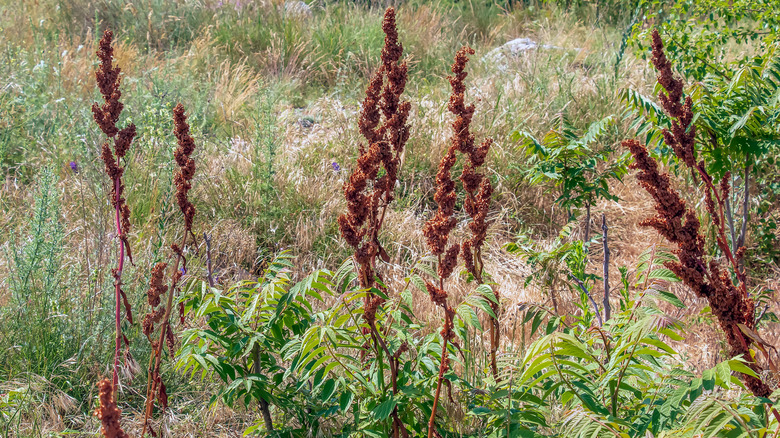The Pretty Flowering Weed That Actually Benefits Your Garden
Weeds tend to get a bad rap in the garden, but not every wild plant is a nuisance; there's one pretty flowering weed that brings benefits to your landscape. With wavy leaves and tall stalks, curly dock (Rumex crispus) offers several practical upsides. This upright, flowering perennial is often overlooked as an unwanted guest, but it's one of the weeds that are actually good to grow, both from an aesthetic and ecological perspective. This humble weed can improve soil structure, attract a range of wildlife, and serve multiple purposes for humans.
While curly dock isn't flashy, it does have a unique appeal. To learn how to identify this common garden weed as it matures, look for flower stalks that rise from midsummer into fall, forming tall, branching plumes covered in papery, three-winged sepals that deepen from green to coppery red as the seasons change. These textured spikes persist through winter, offering subtle structure and seasonal interest long after other plants have faded. They're also popular for dried arrangements, giving this humble plant a decorative use.
Beyond its looks, curly dock is a resilient plant. It's able to tolerate poor soil conditions, drought, and even temporary flooding. However, like many weeds, it has its downsides, so it's good to know how to keep curly dock out of your lawn if you want to contain the spread of the plant after it matures.
Why curly dock deserves a place in the garden
Curly dock's root system may be its most valuable trait. Its strong taproot, which can grow up to 4 feet deep, pulls moisture from below the surface and naturally aerates compacted soil. That makes it a low-maintenance option for tough or neglected spots, where it can improve soil structure over time without human intervention.
The plant also provides surprising value for wildlife. Curly dock serves as a host and food source for caterpillars, which means that it is able to support the butterfly lifecycle and indirectly aid pollination. Its reddish-brown seeds are eaten by songbirds like sparrows and red-winged blackbirds, and it naturally resprouts each spring, making it a helpful presence for supporting biodiversity in the garden.
It has a history of human use as well. The young spring leaves contain vitamins A and C and are edible when cooked, though they should be eaten in moderation due to their oxalate content. Folk remedies once used curly dock for jaundice and other skin conditions. However, the plant is toxic to household pets and horses. It spreads quickly, as each plant can release thousands of seeds. Gardeners who choose to grow curly dock should be prepared to manage its spread through regular cutting or deadheading.

